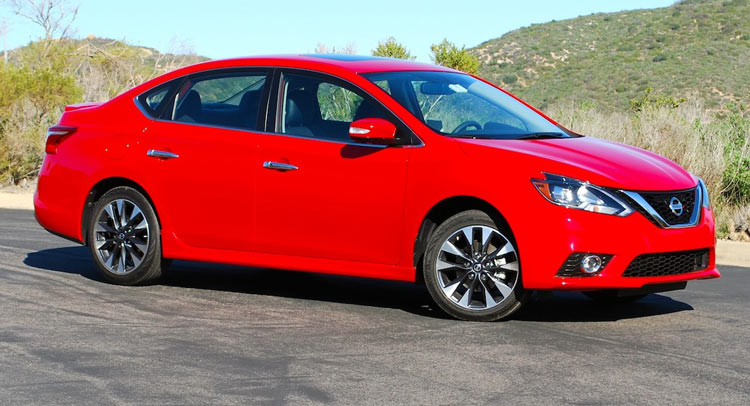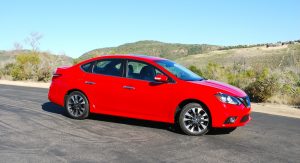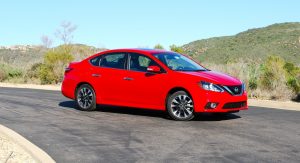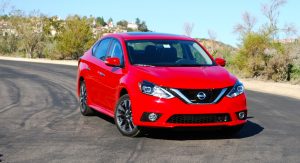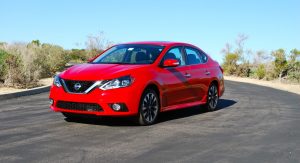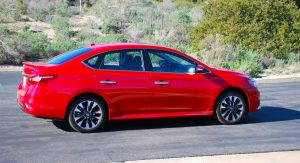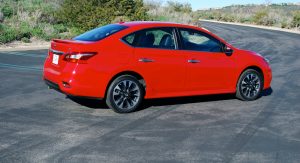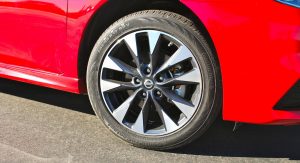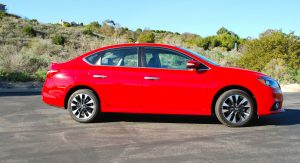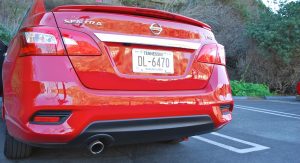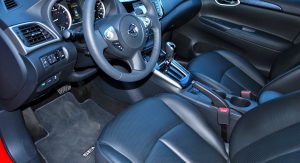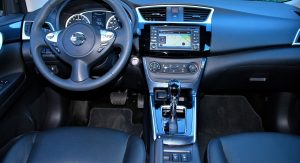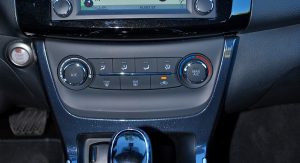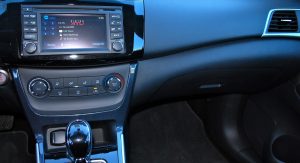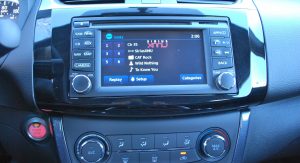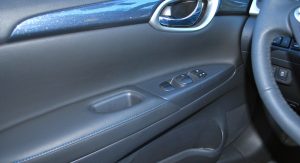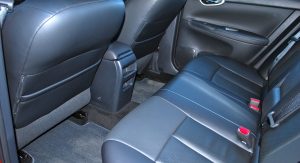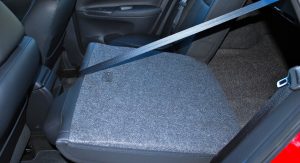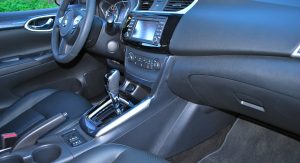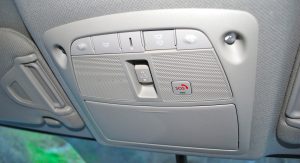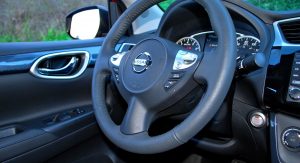It’s a buyer’s market if you’re looking at compact sedans. One by one, automakers who wrongly predicted at the beginning of the decade that customers would put up with penalty boxes in exchange for good fuel economy and low monthly payments are rushing to correct their mistakes.
The latest case is the 2016 Nissan Sentra, just facelifted and now on sale to atone for the sins of the past. Launched in late 2012, the current Sentra may have been more fuel efficient and value oriented than its predecessor, but it arrived on the market after Ford proved customers would pay for elaborate technology in a Focus, and after Honda bombed critically with its cheaper Civic.
Fast forward to today, though, and these cars that used to be derided as penalty boxes are growing ever sleeker and more costly – maybe because you’re all off buying subcompact crossovers instead of compact sedans.
Even though its sales have been healthy in recent years, the Sentra had to come in for a substantial reworking, complete with steering, suspension, safety and styling changes. Is it enough to make it stand out among newly refined rivals?
One goal was clearly to spice up the Sentra’s knockoff Infiniti looks, so Nissan went to its 2016 Maxima flagship sedan for heavy doses of inspiration in the form of “Energetic Flow” in Nissan-speak. They did the same for the 2016 Altima, so what were you expecting?
Like the Altima, grafting the new front (the designer says it’s a new car from pretty much the windshield forward) makes it really look like the car was designed at two different times. Still, there’s a net gain in terms of making the Sentra look more interesting. LED headlights have emerged up front, available on SR and SL grades, and new 16-inch wheels are standard on lesser models.
At the rear, however, changes are far less substantial and that makes the Sentra look disjointed. SR models get a set of appearance enhancements like an enlarged exhaust tip and decklid spoiler that looks like it came off a ‘90s Ford Escort. This doesn’t really help the elevate Nissan’s compact sedan into the territory of the strikingly redone 2016 Civic, or even the classic Germanness of the Volkswagen Jetta.
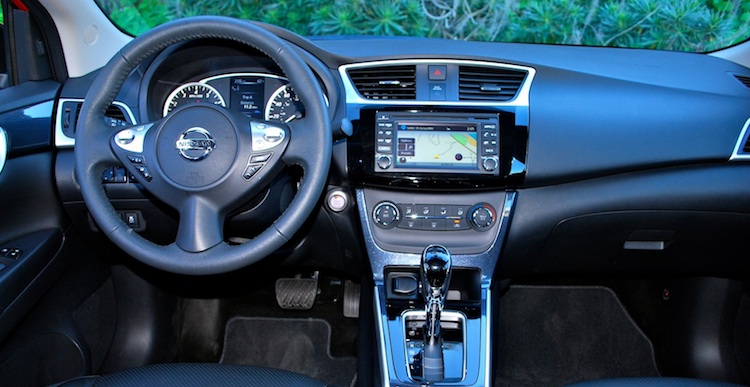
Tech talks
Where Nissan has excelled greatly in the last few years is making sophisticated pieces of in-car tech available at reasonable prices. To that end, the company likes to tout that it’s possible to get a Sentra with features such as Siri Eyes Free, blind-spot monitoring and navigation for right around $20,000. Sure, you need to spend a few grand extra to get luxuries like leather seats and a sunroof, but the features people are expecting if they commit to a new car are there – and for a lot less than expected.
Considering 2016 Sentras start at $17,615 for a base S six-speed manual (the only Sentra you’re going to row your own gears, mind you), the interior is a pretty nice place to be. Popular SV trim and higher get a nice five-inch color display between the gauges for trip computer functions. New this year is a power driver’s seat for models equipped with leather upholstery – it’s a worthy addition for reasons I’ll get to later. The optional navigation system isn’t blessed with an enormous touchscreen or dazzling graphics, but it’s still easy to use and gets you point-to-point with ease – and most importantly it’s a cheap upgrade.
It’s kind of like the Sentra’s whole interior – not particularly lavish but a perfectly nice place to be nonetheless. The dash top is soft and nicely grained, and most of the plastic surfaces you actually touch are for the most part quality pieces. Controls are simple to use and well-placed, as well. As far as simple tasks like adjusting the radio and climate control, the Sentra is well ahead of rivals such as the Civic, Focus and Toyota Corolla.
Buyers less interested in interior technology can take note that while the Sentra’s rear seat space is nothing to write home about, the trunk is absolutely enormous. At 15.1 cubic feet, it’s large for the class. But it’s also deep enough to support tall items, while managing to still carry a spare under the carpet. It probably holds more than the back of a Juke does.
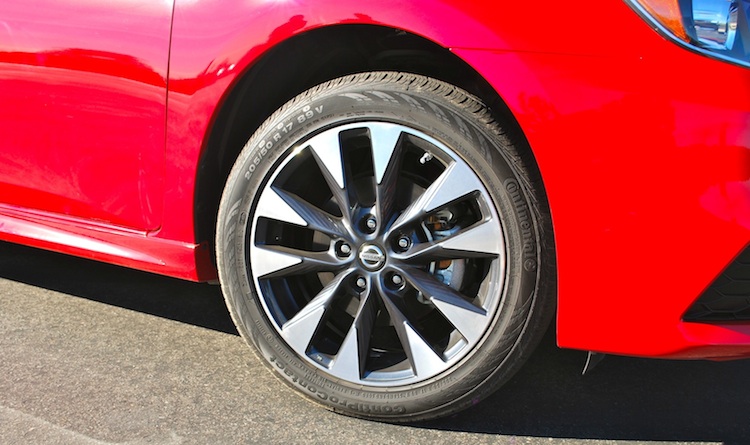
Sudden Valley
Nissan put us up in Newport Beach, a very nice California coastal town in Orange County. And when their route took us on a tour of most of the county between Los Angeles and San Diego, I realized the region has a lot of Nissan Sentras. It may come as no surprise, then, that the 2016 Sentra was basically tuned for Orange County. This has good and bad points.
The ‘13 Sentra was least on its game when it came to actually driving the thing, as if it were tuned for the purpose of scoring high fuel economy at the cost of everything else. Improvements were introduced in subsequent years did try to refine some noise and power ailments, but the 2016 model goes the furthest. Revisions were made to the steering and suspension, with the hopes of sharpening up some of the Sentra’s cornering characteristics. It’s not sporty by any means, but the car feels more substantial than before.
The 1.8-liter, 130 horsepower four-cylinder remains the only engine and it’s unchanged for 2016, but the CVT gets revised programming. You still don’t get any sort of manual control over it as you would in a Toyota Corolla or Scion iM with its seven “gears,” but at least there are Eco and Sport buttons that do have some influence over the way the transmission operates. Seeing as how they’re buried to the lower left of the dashboard and I only found the buttons when looking for the hood release, almost no Sentra drivers will get out of Normal mode.
That’s too bad because Sport greatly improves the car’s responsiveness when a burst of power is needed for on-ramp merging or passing maneuvers. Otherwise the Sentra responds with increasingly mean groans when you press your foot harder on the accelerator. Power does come, eventually, though.
At least when you’re cruising at any speed, the Sentra is very quiet. A thicker windshield, new engine mounts and more insulation make the car quiet and a good road trip companion. That is, until the backache sets in. The Sentra’s front seats feel comfortable at first. But they’re overstuffed and seem to be shaped opposite of the way humans are shaped. After about 30 minutes behind the wheel, I kept fussing with the seat controls in the search for a comfortable spot. I didn’t find it over the course of a day.
And if your front passenger is much taller than 5-foot-10 or so, he or she will wonder why the seat is mounted so high and why there isn’t any height adjustment for it. Each time I got in, my hair brushed the sun visor, and by the end of the day, I was slouched into what has to be a yoga position.
The Sentra, therefore, is happiest if your commute takes you from one side of Irvine to the other.
A photo posted by Zac Estrada (@zacestrada) on Jan 26, 2016 at 3:36pm PST
You’re a good man, Charlie Brown
The Sentra is not a bad car, but it’s still a case of just getting what you paid for. The 2016 model is the car Nissan needed three years ago to stand out in the segment, but now it’s simply keeping pace with older designs rather than standing out among the fresh faces.
Nissan would like to point out the most popular Sentra SV is more than a $1,000 less than where the least expensive Civic starts off. For $20,405, Nissan gets you a Sentra with the available Driver’s Assist package that bundles desirable options such as navigation and blind-spot monitoring. Even a loaded SR model like the one I drove – complete with the leather upholstery, power driver’s seat and the technology suite – goes for a shade over $25,000.
The Honda Civic LX is still the better car and worth the price premium. But the Sentra has a place in the market. It’s a compelling buy if you want a good amount of stuff for not a lot of money. Go in, get the one the dealer dying to get rid of by the end of the month and drive it through grad school or to your entry level job. Then after a few years or 150,000 miles, you’ll move on to something else.
The Sentra doesn’t have a glamorous role in life, but it’s doing the good work.
Photos: Zac Estrada/Carscoops



